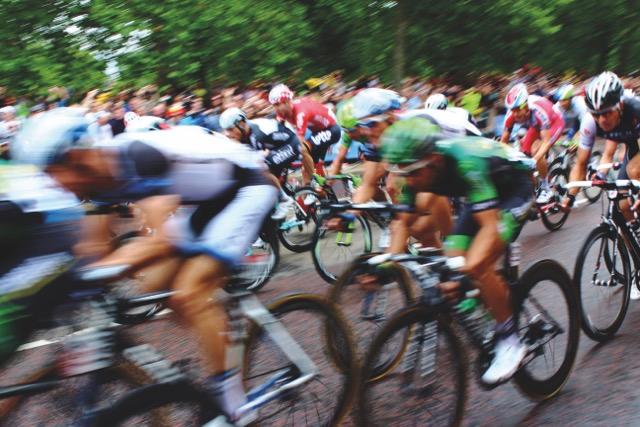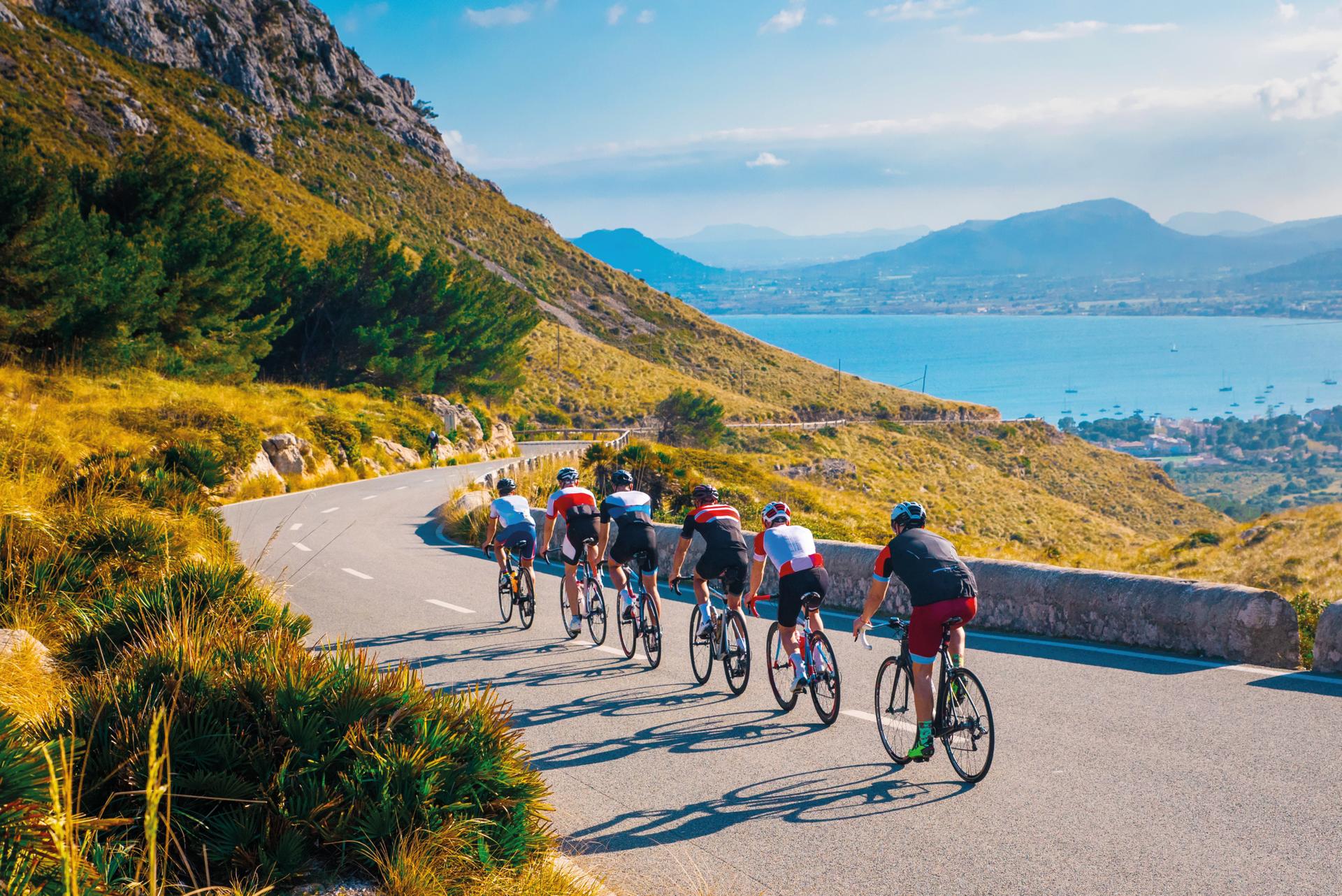
Behind the broadcast of Tour de France
From helicopters to augmented reality, the 2025 Tour de France pushed the boundaries of live broadcasting, delivering every twist of the race to record-breaking global audiences

2025’s Tour de France marked the 112th edition of the competition since its inauguration in 1903. Maurice Garin won that first landmark event and wore a green armband to signify his lead. The famous yellow jersey wouldn’t be introduced until 1919. Remarkably, Garin’s winning margin was nearly three hours, a feat which has yet to be beaten.
The 2025 Tour started in Lille on 5 July, finishing with the final stage at Champs-Élysées on 27 July. This year’s race incorporated five summit finishes and spanned four mountain ranges – the Alps, Massif Central, Jura and Pyrenees. Tadej Pogačar of UAE Team Emirates XRG won the general classification, marking his fourth victory in the race in the past six editions and securing back-to-back wins for the second time.
Live radio coverage of the Tour first began in the twenties. It wasn’t until 1948 that the race was first televised live. Fast-forward to the present, and every single second of the race is now transmitted around the globe. Footage is captured through various means, including by helicopters, vans, motorbikes and, more recently, even drones have been incorporated. A combination of these elements helps ensure every second is captured, as well as displaying the beautiful French landscapes.
The 2025 Tour de France was broadcast live by France Télévisions with an average of 3.8 million viewers in France each day, a 9% increase compared to 2024. In 2024, the race was watched by an estimated 150 million people in Europe – a figure that includes more than 40 million French viewers. The most-watched stage for 2025 was stage ten, on Bastille Day, attracting 5.4 million viewers and a 49.8% audience share in France. The final stage in Paris saw a peak of 8.7 million viewers, the highest French viewership for the Tour in 20 years.
Up, up and away!
Since 1999, Hélicoptères de France (HdF) has filmed the Tour de France. HdF pilots fly entirely by visual flight rules, daily, for the three weeks of the Tour. By the time the riders finish on Champs-Élysées in Paris, the three HdF helicopters have each amassed about 110 hours of flight time throughout the event. During that time, the HdF pilots frequently fly in restricted airspace over cities, nuclear power plants, government buildings and installations, as well
as over 30 nature areas.
“For the Tour de France, I mainly take care of all the work upstream of the operation, to ensure it takes place in good conditions,” says Silvère Toyon-Pope, HdF deputy operations manager. “We operate seven helicopters on the Tour – three dedicated to the television part and four dedicated to transporting people for the organisation. We operate an AS350 for the television relay and two twin-engine AS355s for filming. For organisation purposes, we operate four AS350s.”
It is paramount that the helicopters have no impact on the riders. “Our procedures require that sufficient margins be maintained for this,” says Toyon-Pope. “Each TV helicopter has two cameras; these are GSS 512 gimbals with a Sony HDC-P50 camera and Canon UHD lenses. The TV helicopters also have a wide-angle gimbal at the front for landscapes and a long-focus camera on the side for zooming. Each gimbal also has a rain spinner option to make both rainwater and mosquitoes invisible. This equipment is provided by a service provider.”
The cameras are encased in pods that are designed to interfere as little as possible with the aerodynamics of the aircraft. The entire Tour de France is a challenge for HdF, as the event is an ongoing operation. “We must therefore prepare all landing zones in advance, so that we can refuel the helicopters according to the director’s desired strategy (at least two landing zones that our vehicles can access for each stage),” says Toyon-Pope. “We also coordinate the helicopters’ passage with various air traffic control, prohibited and military zones so as not to miss any of the event. The key is that advance preparations are done well to ensure the operation runs smoothly.”
In addition to the pilots, HdF’s Tour operations require them to have three mechanics, a fuel logistics specialist and someone to oversee the entire helicopter operation on hand. “This complements the two to four people managing the behind-the-scenes preparation and contingencies from our main base,” adds Toyon-Pope.
This article first featured in the Autumn 2025 issue of FEED magazine.
Virtual vélos
Live sports events like the Tour de France offer broadcasters a rare opportunity to push the limits of their storytelling. “With tools like augmented reality graphics, they can transform raw race data into captivating, real-time narratives that keep viewers hooked,” says Adrian Fiedrich, product owner of CoE Graphics and VS/AR at Vizrt. “Creativity isn’t just nice to have – it’s what turns casual spectators into passionate fans. In fact, a Vizrt-commissioned survey found 77% of fans consider on-screen graphics essential for on-the-go sports.”
Anchoring production in the heart of a tournament’s location is one of the most effective ways to immerse sports fans – a technique increasingly enabled by advanced AR technology from Vizrt. “During the Tour de France, for example, broadcasters brought a floating 3D map of France into the studio, placing it between the presenters,” says Fiedrich. “Major milestones are pinpointed, race routes traced and stats, such as the distances between each stage, visualised in real time.
“Sometimes, the most striking enhancements are also the simplest,” he continues. “In one broadcast from another customer, a life-sized bicycle appeared in AR to help presenters break down a cyclist’s movement and speed with precision. Being able to see these elements, rather than simply hear about them, draws audiences into the decisive moments that shape the race. Even through a screen, AR-powered storytelling tools from Vizrt have helped fans feel closer to their favourite athletes and gain a deeper, more exhilarating understanding of the sport.”
Femmes of the future
This year also saw record viewership for the Tour de France Femmes, the women’s edition of the iconic race. The edition ran from 26 July through to 3 August, with French cyclist Pauline Ferrand-Prévot winning the event. This feat made her the first French winner of either the men’s or women’s competition since Bernard Hinault in 1985. This year’s Tour de France Femmes also marked its longest edition since the race was brought back in 2022, taking place across nine stages.
The Femmes Tour drew a remarkable collective TV audience of 25.7 million across the linear TV and digital platforms of public service broadcaster France Télévisions. This statistic was up significantly on the figure from the 2024 edition, which stood at 18.3 million.
The per-stage viewership was 2.7 million on average, which was at least 500,000 higher than every edition since the re-establishment of the Femmes race in 2022.
As the curtain falls on the 2025 edition of the Tour de France, it’s clear that the race remains as much about innovation as about tradition. What began in 1903 with Maurice Garin and a simple green armband has since grown into a truly global spectacle, blending raw athleticism with cutting-edge technology.
Helicopters sweep across mountain peaks to capture every twist of the peloton, drones and augmented reality deepen fan engagement and record-breaking audiences continue to prove the Tour’s enduring place in the live sports calendar.



